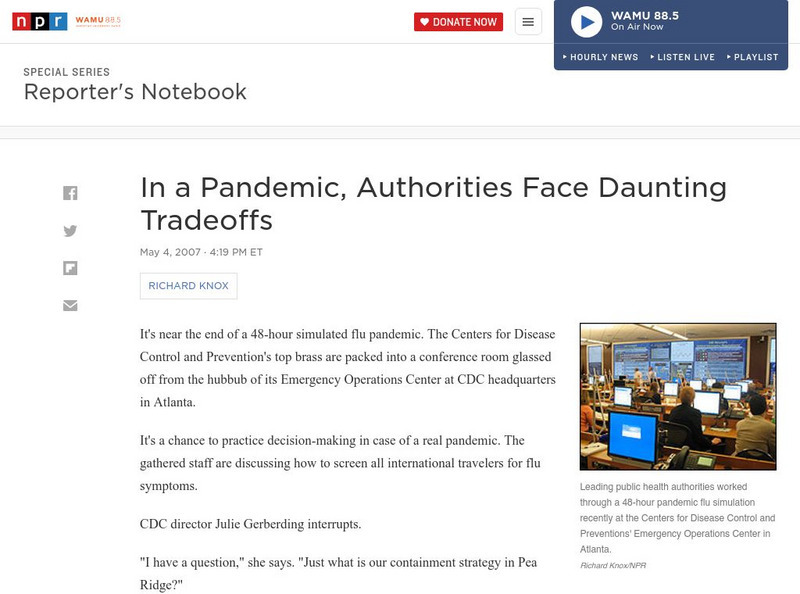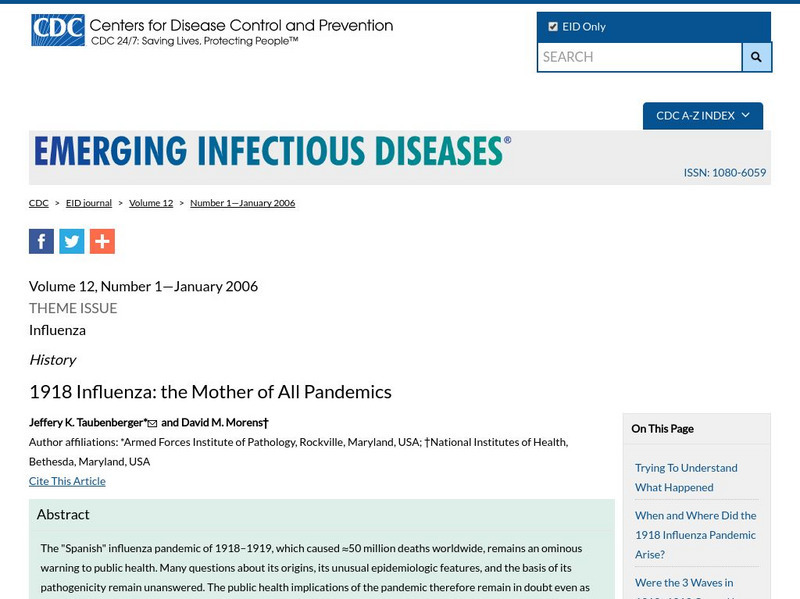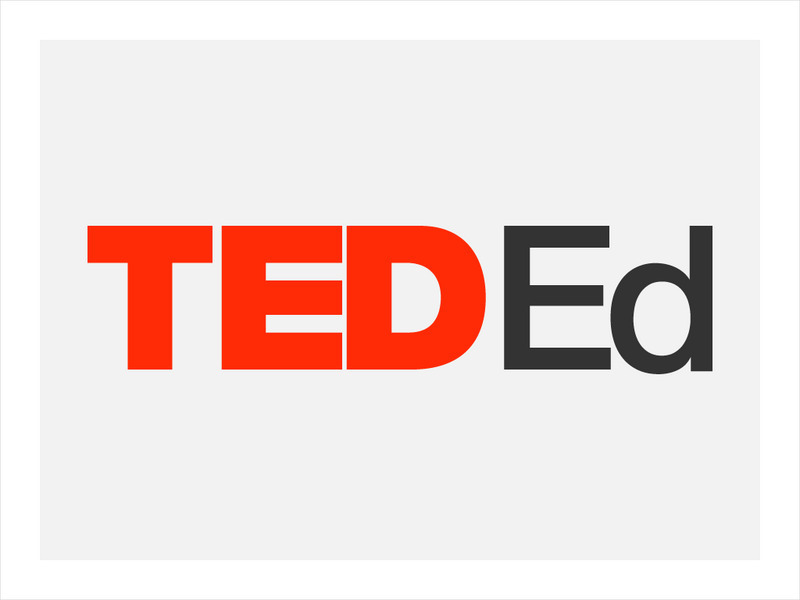Hi, what do you want to do?
World History Digital Education Foundation, Inc.
COVID-19: Geographic Diffusion
An intriguing lesson provides information to help academics understand the role of geography in the diffusion of the COVID-19 illness. Academics interpret charts and make predictions for the future. The timely resource includes...
World History Digital Education Foundation, Inc.
COVID-19: Globalization and Economic Impact
How does COVID-19 affect a global economy? The final installment in a three-part series explores the economic impact of the illness on a global scale. High school historians discuss globalization and analyze sources of data to understand...
Curated OER
How Germs Spread
Students conduct a test to help them visualize the spread of
germs. They identify that a pandemic is an epidemic (an outbreak of an infectious disease) that spreads across a large region or even worldwide. Finally, students state...
Curated OER
Proof of the Primate-ive Roots of AIDS
Students explore recent breakthroughs in H.I.V. and AIDS research, as well as research various epidemics that have devastated the world population at various points in history.
National Academy of Sciences
Infectious Diseases: Bird Flu Today
Understanding how viruses spread has never been more important. A well-designed WebQuest lesson has young scientists research viruses, how they spread, and how they are treated. They also consider the trends in common viruses in the world.
Curated OER
HIV/AIDS and Development
In this global issues worksheet, students conduct research on the the status of AIDS/HIV treatment in the world and respond to 4 short answer questions related to the topic.
Curated OER
The Hijacker - How a Virus Spreads
Young scholars view a video that presents how viruses attack the body and how the body's immune system responds. They simulate the spread of an infectious disease and establish the identity of the original carrier.
Curated OER
The Cantankerous Pathogen
Students explore what factors influence the spread of infectious diseases. They explain how human manipulation of the environment affects the transmission of diseases.
Curated OER
Bird Watching
Young scholars explore the implications of the avian flu. In this personal health lesson, students listen to a lecture about the avian flu, its history, and how it spreads.
Curated OER
Separating Fact from Opinion
Young scholars read, "A Misspent youth: The HIV/AIDS Crisis Comes of Age", and discuss the article or write their answers to the questions imbedded in the lesson. They write their own essay.
NPR: National Public Radio
Npr: In a Pandemic, Authorities Face Daunting Tradeoffs
A May 2007 report on a Center for Disease Control exercise designed to study decision making in the event of a pandemic. Also provides links to related NPR stories.
PBS
Pbs Learning Media: Primary Source Set: The Yellow Fever Epidemic of 1878
This collection uses primary sources to explore the Yellow Fever Epidemic of 1878.
National Institutes of Health
Niehs: Pandemic Flu..what to Do, What to Do!
What is "pandemic flu", what can you do to help, and how can you stay healthy? For parents, there is a checklist to follow for planning ahead for emergency situations.
A&E Television
History.com: How Five of the World's Worst Pandemics Finally Ended
As human civilizations flourished, so did infectious disease. Large numbers of people living in close proximity to each other and to animals, often with poor sanitation and nutrition, provided fertile breeding grounds for disease. And...
Centers for Disease Control and Prevention
Centers for Disease Control: Eid: 1918 Influenza Pandemic
A comprehensive discussion of the influenza pandemic of 1918. Read about the investigation into the virus that caused the flu, where did the flu begin, and why did it sicken so many young adults. There are charts showing the incidence of...
PBS
Pbs Online News Hour: Extra: 2009 H1 N1 Flu: The Next Pandemic? (Lesson Plan)
This lesson plan focuses on viruses, particularly the Swine Flu, and allows students opportunities to simulate how viruses spread and the results.
US National Archives
Nara: Deadly Virus: 1918 Flu Epidemic
Online exhibit that shows through text, photos, and historically significant documents the toll of the flu epidemic of 1918 in America.
TED Talks
Ted: Ted Ed: How Pandemics Spread
A discussion about the globalization of disease, and the implications of a pandemic. Mark Honigsbaum describes the history of pandemics and how scientists can help prevent future outbreaks. [8:00]
Ducksters
Ducksters: Biology for Kids: Epidemics and Pandemics
Kids learn about epidemics and pandemics in the science of biology including how they begin, how diseases spread, and the stages of a pandemic.
Stanford University
Stanford University: The Influenza Pandemic of 1918
Article that shows through text, photos, and historically significant documents the toll of the flu epidemic of 1918 in America.
Other
The Global Hiv:aids Epidemic
A comprehensive look at the HIV/AIDS epidemic and the strides made in treatment and prevention over the past 30 years.
PBS
Pbs: American Experience: Influenza 1918
The worst epidemic to hit the United States occurred in 1918. Nicknamed the Spanish Influenza, this epidemic killed over 600,000 Americans. This documentary site tells the story of a flu whose cause was unknown and that disappeared as...
OpenSciEd
Open Sci Ed: Covid 19 & Health Equity, Middle School Science
The unit focuses on the question How can people help end pandemics? It is designed to teach students about the COVID-19 pandemic, transmission of the COVID-19 virus, and the impacts of the pandemic on communities.
PBS
Pbs Learning Media: Pbs News Hour: Coronavirus Update: Where Things Stand Three Months Into Quarantine
As the coronavirus pandemic continues, states are balancing public health through stay-at-home orders and crowd limits with concern for jobs and the economy. Alabama was among the last states to issue a stay-at-home order on April 3rd...























